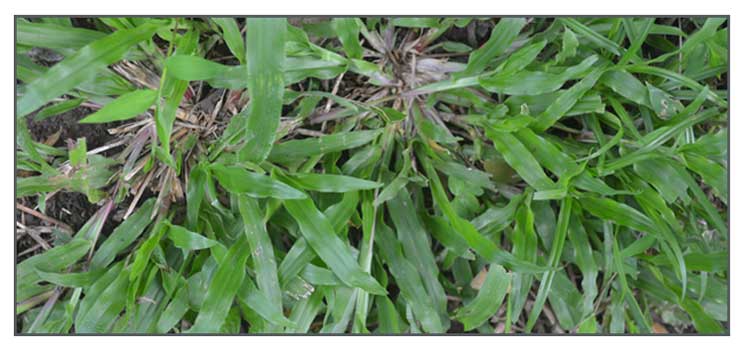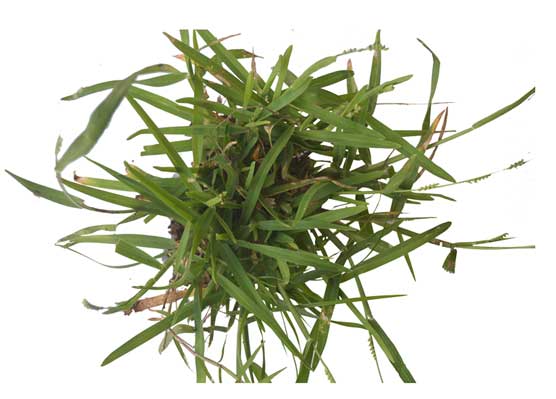
Family • Gramineae / Poaceae
Crab grass
Digitaria sanguinalis (L.) Scop.
HAIRY CRAB GRASS
Ma tang
| Scientific names | Common names |
| Asperella digitaria Lam. | Pagpagai (Bon.) |
| Cynodon praecox (Walter) Roem. & Schult. | Saka-saka (Ilk.) |
| Dactilon sanguinale (L.) Vill. | Crab finger grass (Engl.) |
| Digitaria aegyptica Willd. | Crab grass (Engl.) |
| Digitaria caucasica Henrard | Hairy crab grass (Engl.) |
| Digitaria eriogona (Schrad.) Link | Harig vingergras plant (Engl.) |
| Digitaria gracilis Guss. | Summer grass (Engl.) |
| Digitaria intermedia Gennari | |
| Digitaria nealleyi Henrard | |
| Digitaria nervosa (Rottb.) Roem. & Schult. | |
| Digitaria pectiniformis (Henrard) Tzvelev | |
| Digitaria praecox (Walter) Willd. | |
| Digitaria sabulosa Tzvelev | |
| Digitaria sanguinalis (L.) Scop. | |
| Digitaria sanguinea (L.) Weber [Spelling variant] | |
| Digitaria vulgaris (Schrad.) Besser | |
| Millium membranaceum Moench | |
| Panicum eriogonum Schrad. | |
| Panicum fallax Spreng. | |
| Panicum gussonii K.Richt. | |
| Panicum rottleri Kunth | |
| Panicum sanguinale L. | |
| Paspalum aegyptiacum (Willd.) Poir. | |
| Paspalum oxyanthum Steud. | |
| Paspalum sanguinale (L.) Lam. | |
| Sanguinaria nevenarae Bubani | |
| Syntherisma praecox Walter | |
| Syntherisma sanguinale (L.) Dulac | |
| Syntherisma sanguinalis (L.) Dulac | |
| Syntherisma vulgaris Schrad. | |
| Digitaria sanguinalis (L.) Scop. is an accepted name The Plant List | |
| Other vernacular names |
| CHINESE: Ma tang. |
| FRENCH: Digitaire sanguine, Manne terrestre, Panic sanguin, Sanguinette. |
| GERMANY: Bluthirse, Blutrote, Fingerhirse. |
| ITALIAN: Sanguinella. |
| JAPANESE: Inubie, Mehishiba. |
| NETHERLANDS: Bloedgierst. |
| PORTUGUESE: Milha-digitada. |
| SPANISH: Alpiste cimar, Conejo, Frente de toro, Fresadilla, Garrachuelo, Gaudin, Guardarrocio, Manga larga, Milha-de-pendao, Pasto cangrijo, Pasto conchon, Pasto cuaresma, Pata de galina, Pata de callo, Pata de poloma, Pendejuelo, Sombrillitas, Zacate digitaria, Zacate pata de gallina. |
Distribution Constituents Toxicity
Studies Availability |
Godofredo U. Stuart Jr., M.D. |
September 2016
![]()
 |
| Photos © Godofredo Stuart / StuartXchange |
Additional
Sources and Suggested Readings |
| It is not uncommon for links on studies/sources to change. Copying and pasting the information on the search window or using the DOI (if available) will often redirect to the new link page. |
• |
 |

 Gen info
Gen info Botany
Botany
